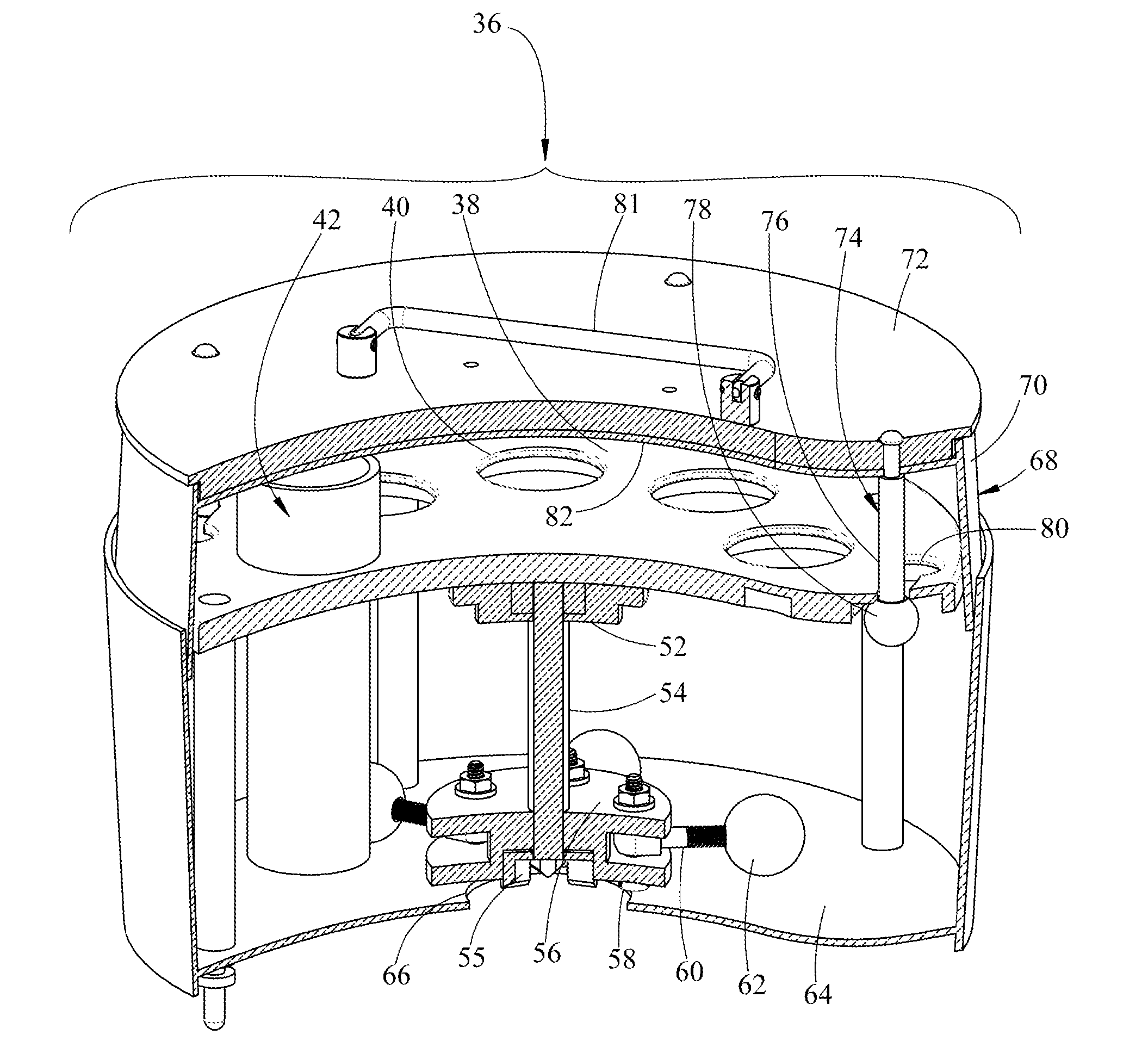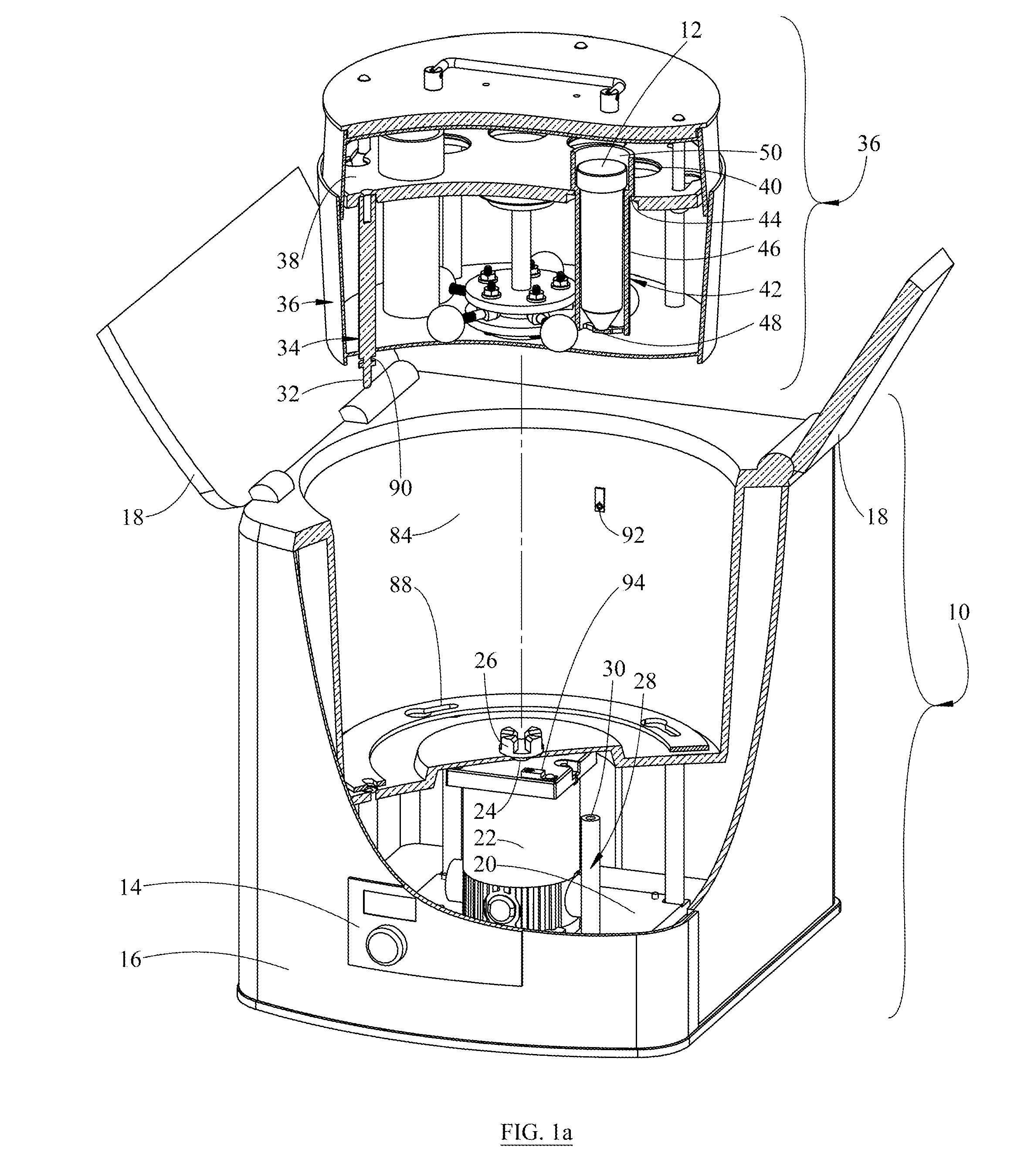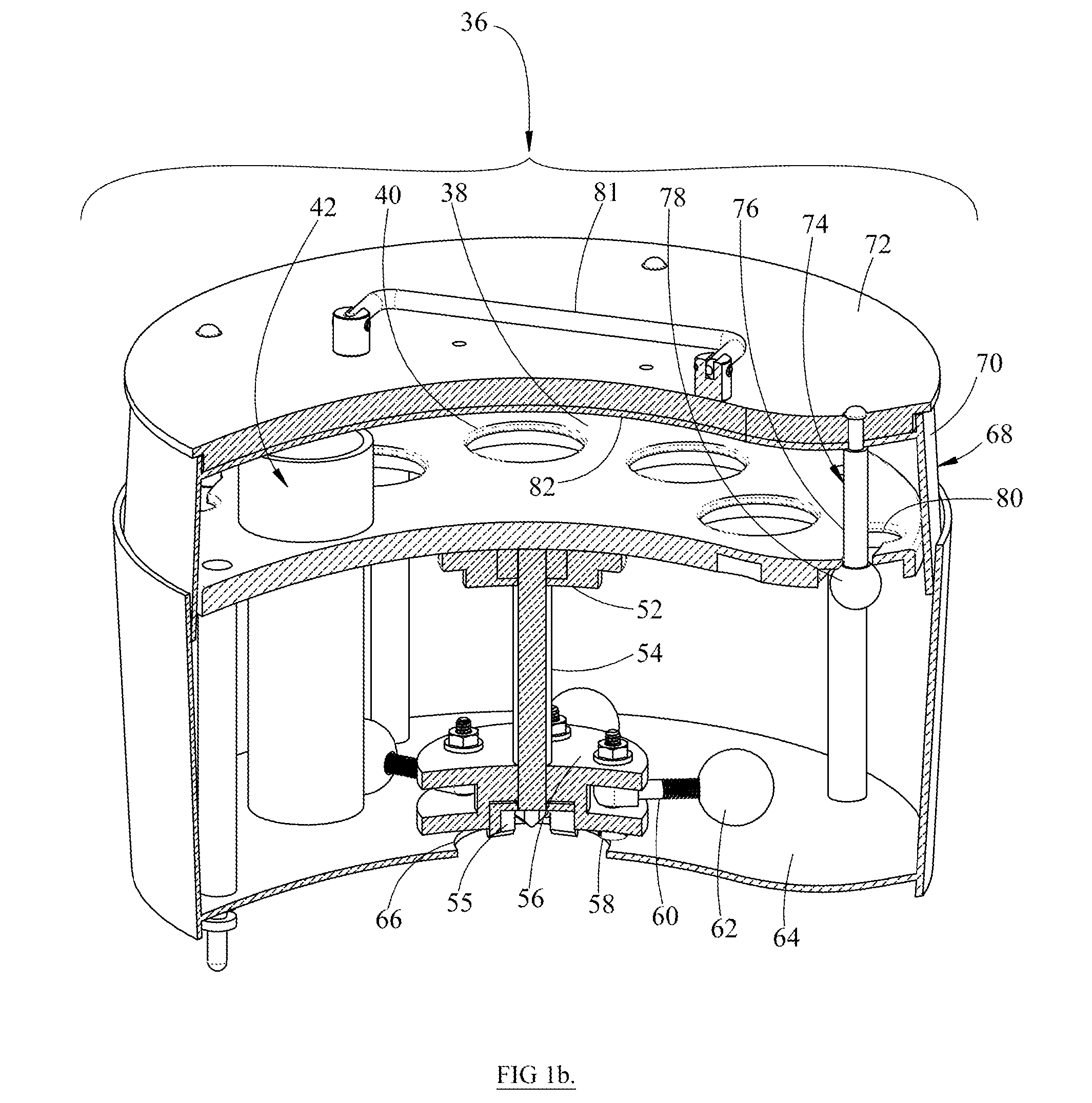Agitation Apparatus with Interchangeable Module and Impact Protection Using Reactive Feedback Control
a technology of reactive feedback control and agitation apparatus, which is applied in the direction of rotary stirring mixer, transportation and packaging, mixing, etc., can solve the problems of mixing, resuspension, homogenization or disruption of the contents of the tube may crack or break, so as to reduce the noise observed by the user. , the effect of convenient and cost-effectiv
- Summary
- Abstract
- Description
- Claims
- Application Information
AI Technical Summary
Benefits of technology
Problems solved by technology
Method used
Image
Examples
first embodiment
FIGS. 1a-d, 2a-c and 3a-b
[0024]One embodiment of the present invention is illustrated in FIG. 1a-d, 2a-c and 3a-b. FIG. 1a shows an instrument or control enclosure 10 for impacting tubes 12; causing frequent oscillations and energetic movement for said tubes 12. The control enclosure 10 refers to several elements acting as a stationary base. The control enclosure 10, contains the electronics (not shown), and internal components. The main body of the control enclosure 10 is an outer housing 16. The front of the outer housing 16 has user controls or user interface 14. The top of the outer housing 16 has an outer lid or cover 18, which splits opening from the center and hinged on the top of the outer housing's 16 right and left sides.
[0025]Mounted to the inside of the outer housing 16 on the bottom face is a motor mounting plate 20. A variable speed electric motor 22 is affixed to the center of the motor mounting plate 20. A drive shaft 24 projects upward to a lower disconnecting coup...
PUM
 Login to View More
Login to View More Abstract
Description
Claims
Application Information
 Login to View More
Login to View More - R&D
- Intellectual Property
- Life Sciences
- Materials
- Tech Scout
- Unparalleled Data Quality
- Higher Quality Content
- 60% Fewer Hallucinations
Browse by: Latest US Patents, China's latest patents, Technical Efficacy Thesaurus, Application Domain, Technology Topic, Popular Technical Reports.
© 2025 PatSnap. All rights reserved.Legal|Privacy policy|Modern Slavery Act Transparency Statement|Sitemap|About US| Contact US: help@patsnap.com



